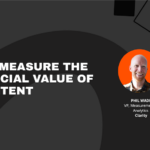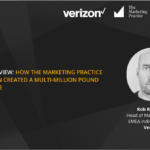Brand building in B2B tech is a long-term investment that doesn’t often see results instantly. In contrast, performance marketing can leverage data and new channels for immediate lead generation. But are these quick results enough?
We wanted to know! That’s why FINITE held this discussion on brand vs performance marketing, so you can find the right balance to drive lasting growth for your B2B tech company.
We opened the discussion with a greeting from our moderator and founder Alex, who introduced our experts:
Dani Hussey, Head of Brand Marketing at Dropbox
Helen G., Head of International Brand Marketing at Fiverr
Michael Bouteneff, Global Marketing Director, Strategic Growth, B2B at Mastercard
Richard Tank, Head of Global Performance Marketing at Cognism
Alex then prefficed the rest of the discussion with a bit of a disclosure statement: that we haven’t pitted brand against performance marketing, rather, looking at the two by their dualities helps us structure an effective discussion.
The first question kicked off a great conversation: How and when should companies, at various stages of maturity, think about brand?
- Brand is connected to the culture of a company, it’s always present.
- To ensure consistency across touch points, the core basics from brand should be mapped out from the start
“Customers love a company when employees love it first,” said Dani Hussey, Head of Brand at Dropbox.
And when should a company actually start investing in brand?
Michael gave great advice for the different factors you should consider when investing in a brand. He said these also depend on how aggressively you want to grow.
How should brand and performance marketing run side by side?
All guests gave great insights into how their individual organisations structure brand and performance marketing, and what each team is responsible for.
Helen mentioned a great Mark Riston quote “become the link between the company and the customers.” She claimed this holds true when thinking about performance marketing and brand marketing ‘frenemies’. You have to remain distinct but collaborate to be the interface between the company and the customers.
Does performance marketing get bigger budgets earlier, and why?
Michael explained how accountants and finance teams are most likely to part with their funds if you can promise them predictable results. For any risk averse company, which most are, it’s easier to put bets into performance marketing as it is harder to track brand impact, especially in the long sales cycles of B2B.
We then had a question from the audience: if you could split budget between the two sides, how would you do this and why?
The group agreed that 50/50 would be the dream, but that’s not usually the case. Dani then gave advice for brand marketers on how to gain more budget through internal education. This includes statistics and qualitative evidence to show how a long term game is crucial.
Advice for brand marketers on how to secure brand might be crucial in the next year, as 70% of brand marketers are already anticipating budget cuts!
Communication, agility, and objectives are so important when advocating for brand marketing.
The conversation then transitioned to measurement. When and how can you measure brand marketing campaigns?
There are a lot of turnkey measurements that aren’t super expensive, including survey based methodologies. If you’re a baby brand, you can start to do an NPS score very early on!
The panel went on to explain which metrics you should prioritise and when, depending on your campaign and its objectives.
We finished off with another question from the audience: Can too much performance marketing for sales campaigns cheapen a brand?
The brand marketing panellists responded that great performance marketing campaigns will just be solving a problem. Therefore, if performance campaigns are addressing a pain point, they’re not damaging at all.
Funnily enough, our performance marketing panellist said it’s very possible that salesy campaigns can damage a brand, and in two very prevalent circumstances!
One final tip: Make sure you don’t have too much varied messaging out there at once, with different positioning and audiences. Make sure your performance and brand campaigns are well aligned.
Alex finished off the discussion with a summary: brand and performance marketing; it’s not one or the other, it’s about working together to be as powerful as can be.










